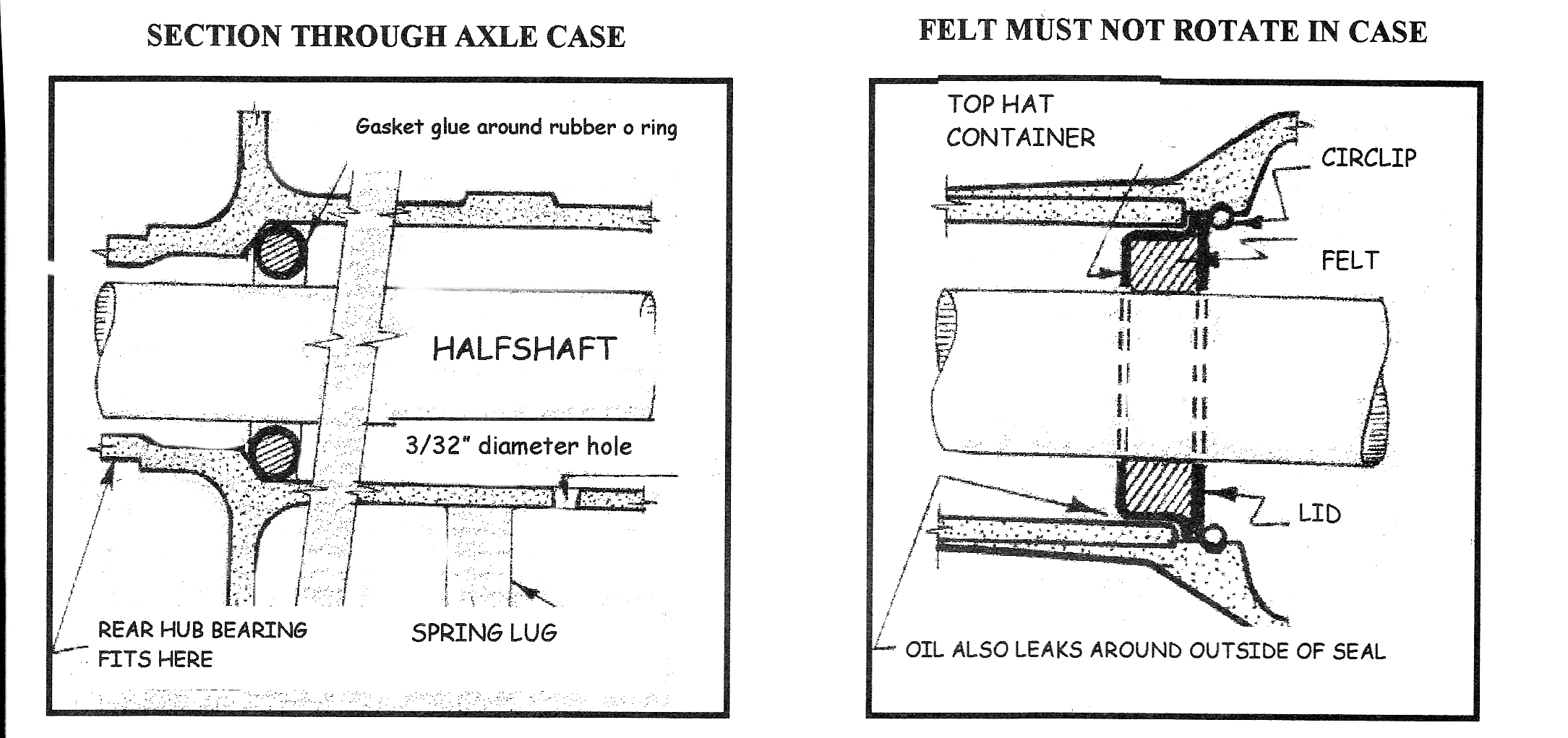PREVENTING OIL ON REAR
BRAKES
Many Austin Seven owners fmd
it difficult to stem the flow of rear axle oil onto their brake linings. Some
resort to modern type oil seals and a few even claim success. But by assembling
the components with a little care and a little cheating, this problem can he
overcome.
1)
THE
FELT OIL SEALS.
The felt oil seals either side of the differential
must be greater in width than the "tap hat" containers, otherwise they will not
compress against their lids and be hold in place. If this happens, the felt will
grip onto the halfshafts instead, and rotate with them. This will cause the felt
seals to polish up their containers and allow a good deal of oil through them.
It will also enable the flat lids to spin behind the large circlips as they will
not he pushed out to make contact. Many circlips have polished flats on them
where this has been happening for many years!
Make sure when re-assembling the circlips into the
axle cases that they stop the lids of the oil seals from spinning. Most felts
that I have bought recently are too thin, so an easy remedy is to buy an extra
felt seal and slice off the necessary amount to add to the narrow felt and
enable them both to pack into their container and just compress when their lids
am fitted. Soak the felt in oil, and when you think they feel right, try them in
their containers and slide them over the halfshafts to roughly the positions
where they will be. Now by holding their caps on and turning the halfshaft, you
will he able to determine if the feats are gripping too tightly onto the
halfshafts and rotating with them, or if the halfshafts are spinning nicely
inside the felts.

2)
DRILLING THE AXLE CASINGS
An extra safety device to stop oil creeping down the
axle tubes is to drill a 3/32" hole at the lowest point of the axle cases just
inside the flange that supports the rear spring pin and bush.
The internal diameter of the axle tubes usually
increases at this point, allowing a small reservoir of oil to build up.
There will he times when the oil misses the drain
holes altogether and will proceed towards the hubs. This situation may he
rectified by pushing a rubber 'c' ring the same diameter as the inside of the
axle tube, with some gasket glue around its circumference, to a point a couple
of inches down from the outside flange of each axle case. Now any oil which
manages to get this far will simply accumulate behind the ring and eventually
drip out of the drain hole on the underside of the axle case and help to
lubricate your rear spring pin bushes! This modification will also dispose of
the rear axle oil that tends to leak around the outside of the oil seals between
their containers and the axle cases and by-passes the felts altogether.
3)
REAR AXLE OIL
I fmd a quarter-pint of Hypoy 140 grade mixed with a
quarter- pint of S.T.P. most suitable.
4)
NOTES
As oil can also leak around the outside of the oil
seals it helps to have the gaps in the circlips at the top of the case.
The rubber 'o' ring can be
replaced by felt. Ideally, a felt seal located (glued) to the case and making
contact with the half shaft would he best. These modifications can only be
carried out when the rear axle is dismantled. ie. when the half shafts are not
fitted to their casings. Bill Williams thought it unnecessary to drill holes in
the rear axle cases, as he assumed most of the oil ran down the half shafts.
An excessive amount of oil will also be allowed to
reach the felt differential seals if earlier half shafts are used in conjunction
with later differential carriers, which have larger diameter bushes for the half
shafts to pass through! - or if the bearing adjusters are not fitted correctly
and there is excessive clearance between the half shaft and the scroll-type oil
throwers, on their inner surfaces.
BARRIE
ARGENT PWA7C with many thanks.
